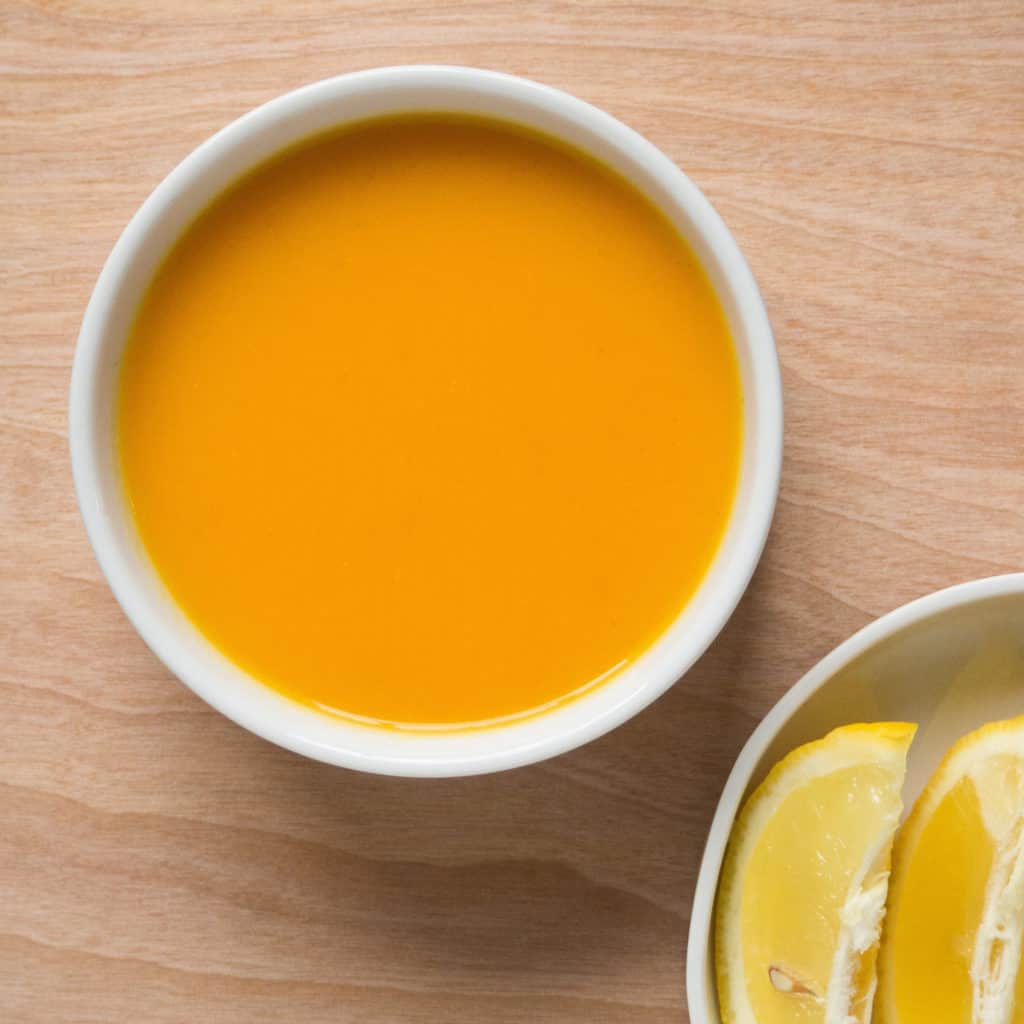
Carrot and Lemon Soup is early summer in a bowl. It is light, velvety, full of flavour makes seasonal produce sing. I have to confess I am not a fan of cooked carrots – they are often way too sweet for me and unfortunately remind me of school dinners I refused to eat. Carrots are amazing raw but cooked oh no. However, this recipe turns my predisposed loathing of cooked carrots on its head. The sweetness of the carrots is tempered by the acidity and tartness of the lemon and the result is a light, flavourful bowl of goodness.
This soup reminds me of warm spring days where it is(just) warm enough to eat lunch in the garden. The carrots, when blended, become break down really well and give the soup a really smooth, velvety texture. It is heaven to eat.
Find the full Carrot and Lemon Soup recipe here.
Perfect for lunch or light dinner and fancy enough for a dinner party starter. Serve with Gluten Free Vegan Rosemary and Sea Salt Crackers or as a prelude to a main meal such as Briam.
Preparation
Difficulty easy
Serves 4-6
Preparation time 5 minutes
Cooking time 20 minutes
Find the full Carrot and Lemon Soup recipe here.
Allergens
The soup is gluten-free and vegan and… celery free, coconut free, garlic free, lupin free, mustard free, nightshade free, onion free, peanut free, sesame free, soya free, tree nut free.
About
Carrot is usually teamed with coriander in soup. Although a great combination, I find this reminds me of winter and thicker, heavier soups.
Carrots are an interesting vegetable. It is believed that the wild ancestors of the carrot originated in Persia (now Iran and Afghanistan). This area remains the centre of diversity for the wild carrot. A naturally occurring subspecies of the wild carrot was bred selectively over the centuries to reduce bitterness, increase sweetness and minimise the woody core; this process produced the now familiar garden vegetable.
The carrot appears to have been introduced into Spain by the Moors in the 8th century. In the 10th century, in West Asia, India and Europe, the roots were purple. Red and yellow carrots were described in the 11th century. Cultivated carrots appeared in China in the 14th century, and in Japan in the 18th century.Orange-coloured carrots appeared in the Netherlands in the 17th century (the Dutch flag at the time, included orange). European settlers introduced the carrot to colonial America in the 17th century.
Carrots were first cultivated for their aromatic leaves and seeds rather than their roots. Carrot seeds have been found in Switzerland and Southern Germany dating back to 2000–3000 BC. Close relatives of the carrot are still grown for their leaves and seeds: parsley, coriander, fennel, dill and cumin. So, no surprise that carrots naturally pair with those close relatives.